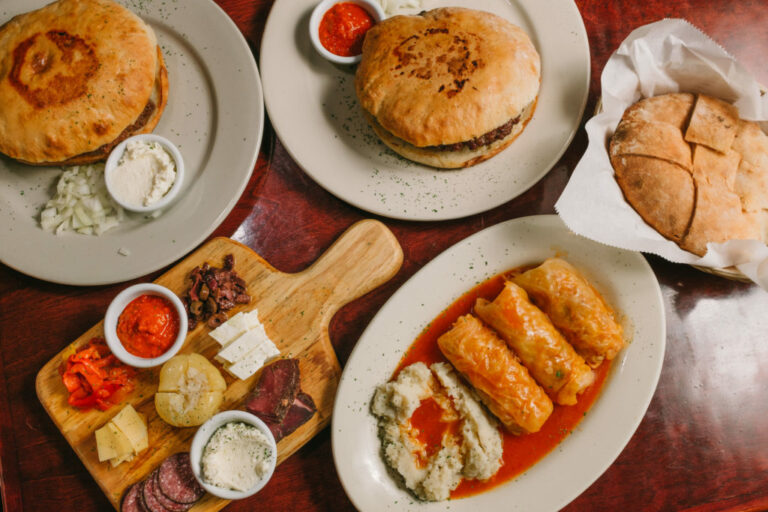Introduction: The Cuisine of Bosnia and Herzegovina
Bosnian cuisine is a blend of influences from the Ottoman Empire and Central Europe. Bosnia and Herzegovina’s location in the Balkans has allowed for the fusion of various culinary traditions. The cuisine is characterized by the use of grilled meats, vegetables, and dairy products, as well as a variety of spices and herbs.
Bosnian cuisine is known for its hearty and wholesome dishes, often featuring stews, grilled meats, and baked goods. The use of fresh, seasonal ingredients is integral to the cuisine, and traditional dishes are often prepared from scratch. Bosnian culinary traditions are passed down through generations and are an important aspect of the country’s cultural heritage.
Traditional Bosnian Dishes: A Brief Overview
Bosnian cuisine is rich with traditional dishes that reflect the country’s cultural and historical diversity. Some of the most popular traditional dishes include cevapi, burek, bosanski lonac, and tufahije. These dishes are often served at family gatherings, festivals, and other special occasions.
Ćevapi: A Popular Balkan Snack
Cevapi is a type of grilled meat dish that is popular throughout the Balkans, including Bosnia and Herzegovina. It is made from minced beef or lamb that is spiced with a blend of herbs and spices. The meat is formed into small sausages or patties and grilled over an open flame. Cevapi are typically served with bread, onions, and a variety of sauces, such as ajvar (a red pepper spread) and kaymak (a type of clotted cream).
Burek: A Savory Pie with Various Fillings
Burek is a savory pie that is a staple of Bosnian cuisine. It is made from layers of phyllo dough that are filled with a variety of ingredients, such as meat, cheese, and spinach. Burek can be served as a snack or as a main course, and is often accompanied by yogurt or sour cream. It is a popular street food in Bosnia and Herzegovina and is widely available throughout the country.
Bosanski Lonac: A Meat and Vegetable Stew
Bosanski lonac is a meat and vegetable stew that is a traditional Bosnian dish. It is typically made with a variety of meats, such as beef, lamb, and pork, as well as vegetables like potatoes, carrots, and onions. The stew is seasoned with a blend of herbs and spices, and is cooked slowly over low heat for several hours. Bosanski lonac is often served with bread or rice.
Tufahije: A Sweet Dessert Stuffed with Walnuts
Tufahije is a sweet dessert that is a popular part of Bosnian cuisine. It is made from baked apples that are stuffed with a mixture of walnuts, sugar, and cinnamon. The apples are then baked until they are tender and the filling is caramelized. Tufahije is typically served with whipped cream or vanilla ice cream.
Baklava: A Sweet and Nutty Pastry
Baklava is a sweet pastry that is common throughout the Middle East and the Balkans, including Bosnia and Herzegovina. It is made from layers of phyllo dough that are filled with chopped nuts and honey syrup. The pastry is baked until it is golden brown and crispy. Baklava is often served as a dessert or as a sweet snack with coffee or tea.
International Recognition: Bosnian Cuisine on the World Stage
While Bosnian cuisine may not be as well known as some other culinary traditions, there are several dishes that have gained international recognition. Cevapi and burek are becoming increasingly popular in Europe and North America, and are often served in Bosnian restaurants and at food festivals. Baklava is also widely recognized as a Middle Eastern and Balkan specialty. As Bosnian cuisine continues to gain recognition, it is likely that more traditional dishes will become popular around the world.

